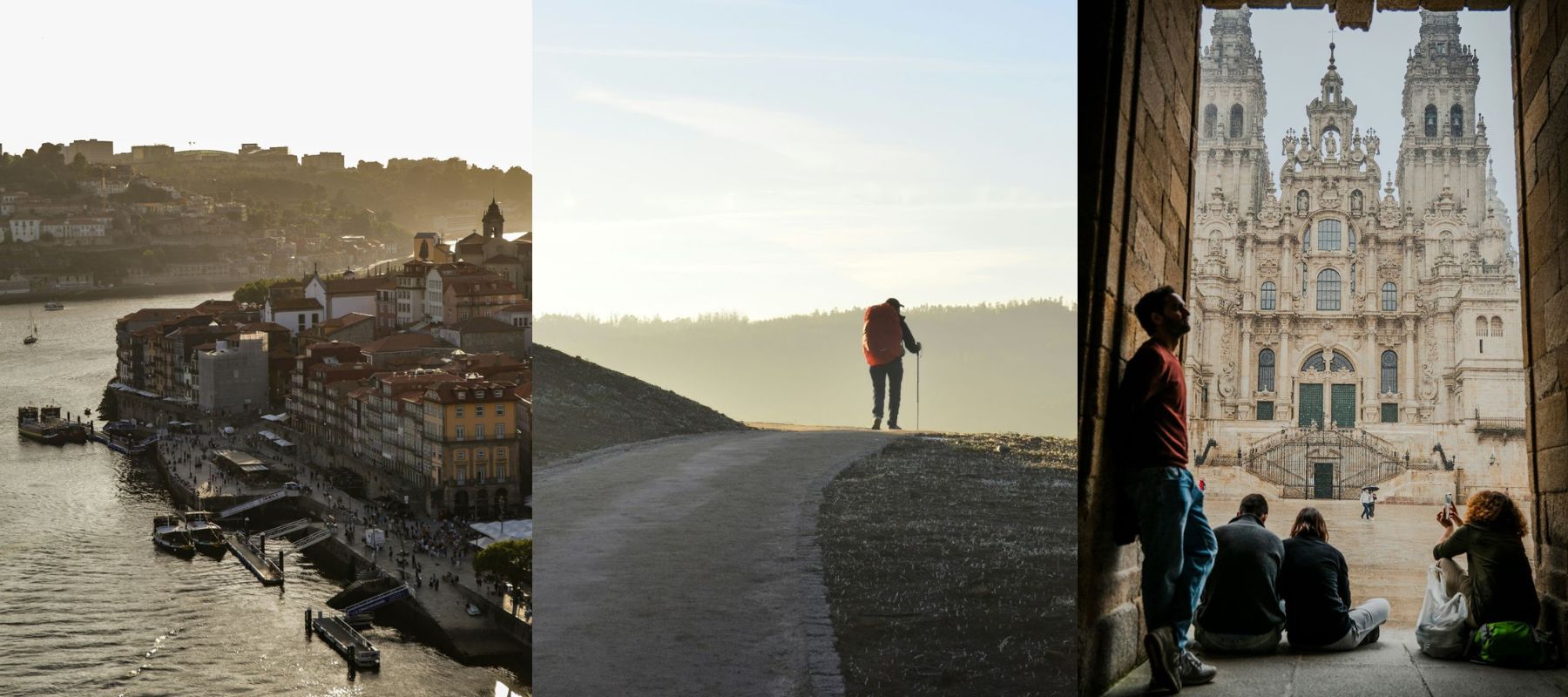Artikkeli: A Guide to The Camino Portugués

A Guide to The Camino Portugués
The Camino de Santiago is one of the world’s most famous pilgrimage routes, walked by people since the Middle Ages. Every year, hundreds of thousands of pilgrims make their way toward the city of Santiago de Compostela in northwestern Spain, each one walking for their own reason, in search of peace, clarity, faith, or simply something they can’t yet name. Some pilgrims walk for a month, covering more than 1,000 km, while others walk only a few days to complete the last 100 km.

The Portuguese Way
The Camino Portuguese is the second most popular route, offering culture, nature, and a deep sense of community. Most pilgrims begin their journey in Porto, a charming city on Portugal’s coast. From there, the route is about 280 km and typically takes 10–14 days to complete. On the Portuguese route, you can choose between two main paths.The Central Route, the more historical way, leads you through medieval villages, vineyards, and forests in Portugal’s countryside. Or the Coastal Route, a path that follows the Atlantic Ocean, where you’ll walk with the sea on your right for much of the way. Along this route, you’ll pass fishing villages and long sandy beaches.
Both routes eventually meet in Redondela, in Galicia, and continue north toward Santiago de Compostela. Whichever path you choose, the walk offers a mix of history, culture, nature, and interactions that make the experience unforgettable.

Life on the Camino
The most traditional accommodation along the way is the albergue, a pilgrim hostel. These simple lodgings are often housed in old buildings with large shared rooms and provide only the essentials. There are also private albergues, where you’ll experience the warm hospitality that is so typical of the Camino.
One example is Albergue de Peregrinos Casa da Fernanda, where Fernanda welcomes pilgrims with open arms and home-cooked food. Places like this are what make the Camino so magical. People from all over the world gathered around the same table, sharing local wine, stories, and laughter. Along the way, everyone becomes familiar, and there’s always someone willing to help, whether it’s with a blister or with emotions, and that is what truly defines the Camino: the sense of community.
The Camino also offers a chance to reflect and live simply. You carry everything you need on your back, and it’s not much. A café is never far away, and in every village, a bed awaits.

Arrival in Santiago
When you finally arrive in Santiago de Compostela, you are met by pilgrims from all over the world, some have been walking for weeks, others for months. All routes end here, and standing in the square before the majestic cathedral is a truly special feeling. In the city, pilgrims share big dinners, raise a glass to the journey, and celebrate the friendships formed along the way.
Every Camino is unique, and you can shape your pilgrimage however you like.
If you want to discover more travel tips from our community of Wild Women, check our Wild Women Blog.



